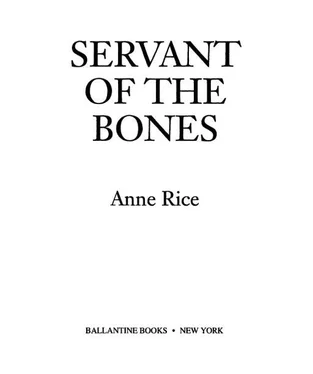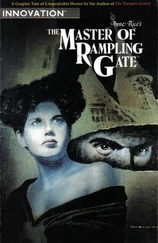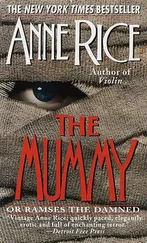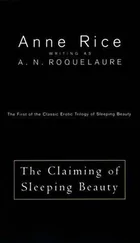All the Western world, including its most tropical outposts, lived now as if winter might at any moment descend, isolate, even destroy.
From towns near the northern polar ice cap all the way down to the tip of the jungles of Peru, people thrived in enclaves designed and sustained by machine, microchip, and microbiology, surrounded by surpluses of energy, fuel, finery, and food.
Nobody ever wanted to run out of anything ever again, and this included information.
Storage. Archives. Information banks. Hard disk, floppy disk, backup tape, hard copy—everything worth anything was somehow duplicated in one form or another and stored.
It was basically the same theory that had created the archives of tablets in Babylon which I had once studied. Not difficult to understand.
But in spite of all these dazzling advances, amid which Esther Belkin had somehow drawn me to her like a magnet, and seemed even now to draw my consciousness to her, there existed still “the Old World.”
Follow the stream into the marshes, into the mountains, into the desert.
“The East” was what they called it, or the Third World, or the Undeveloped Countries, or the Backward Countries, or the Primitive Areas—and it covered continents still where the bedouin in timeless white garments walked his camel through the sandstorm, happy as ever to live amid sun-bright desolation. Only now he might carry with him a battery-operated television set, and a can of a fire-making chemical called Sterno so that when he pitched his tent, he could listen to the Koran read over the television as his food was heated without the use of wood or coal.
In the rice paddies, in the fields of India, in the marshes of Iraq, in the villages the world over, men and women stooped to gather the crop as they had since the dawn of time.
Huge modern urban outposts had arisen amid the millions of Asia, yet the vast majority of tribes, fanners, weavers, vendors, mothers, priests, beggars, and children remained beyond the reach of Western invention, abundance, medicine, and sanitation.
Sanitation was key.
Sanitation involved the chemical purification of human waste and industrial waste, the purification of drinking water and water for bathing—the nullification of filth in all forms and the maintenance of an environment in which one could be born, give birth, grow up, and die—in maximum security against human or industrial or chemical contamination of any kind.
Nothing mattered as much as sanitation. Plagues had vanished from the earth due to sanitation.
In the “West” sanitation was taken for granted; in the “East” sanitation was viewed with suspicion, or people were simply too numerous to be made to conform to the inevitable habits required by it.
Disease was rampant in the jungles; in the marshes; in the deep pockets of vast cities or in the wilderness where the peasants, the workers, the fellaheen, still lived as they always had.
Hunger. There was plenty and there was hunger. There was food thrown away in the streets of New York and there were those starving in Asia on television programs. It was a matter of distribution.
Indeed, that there was as much organization amid all of this change was the modern mystery—that so much could happen and that so much could remain the same.
Everywhere were dramatic contrasts which could both confuse and delight the eye. The holy men of India walked naked beside the roaring automobiles in the teeming streets of Calcutta. People in Haiti lay on the ground starving to death as they watched planes fly overhead.
The River Nile flowed into the metropolis of Cairo, where the buildings of steel and glass stand as high as in Manhattan, yet the streets were thronged by men and women in loose, airy cotton robes of white or black, as pure as the garments worn by the Israelites when Pharaoh let the people go.
The pyramids of Giza remained as always, only the air surrounding them was thick with the emission of automobiles, and the modern city crawled almost to their feet.
Within a stone’s throw of air-conditioned office buildings there lingered pockets of jungle where men knew nothing of Yahweh, Allah, Jesus, or Shiva, or of iron, copper, gold, or bronze. They hunted with wooden spears and poison from reptiles, only now and then stupefied by the sight of big mechanical bulldozers mowing down the forest which was their world.
A flock of goats in the mountains of Judea still looked exactly like a flock of goats in the time of Cyrus the Persian. Shepherds tending sheep outside the city of Bethlehem looked exactly as they had when Jeremiah the Prophet raved.
Though East and West communicated and interacted continuously, each somehow held out against the other. Desert sheiks, rich from the oil discovered beneath their sands, still wore their headdress and robes as they drove about in automobiles. Vast numbers of the world’s women still lived indoors almost entirely and only entered a public street if their faces were veiled.
In New York City, capital of the West and city of choice of the more clever and more powerful, the common person was utterly confident and utterly ignorant of “science” at the same time.
What individual anywhere in the world knew the real meaning of binary code, semiconductor, triodes, electrolyte, or laser beam?
In the upper echelons a technological elite with the powers of a priesthood dealt in perfect faith with the invisible: ions, neutrinos, gamma rays, ultraviolet light, and black holes in space.
Icons shone bright for me in my awakening, bright as the eyes of Esther when she died.
“Servant of the Bones, listen,” she might as well have said. “Servant of the Bones, come, see.”
All the material world was mine to behold, to know, without haste or alarm, as I slumbered, grieving for her, and angry, angry with her killers.
In invisibility and silence, I saw a man parked at Fifty-sixth and Fifth speaking on a tiny phone in his car, in the German language, to an employee of his in the city of Vienna.
One woman in a building in the city of Atlanta in the country of America talked for twenty-four hours before a camera about the weather all over the globe.
Esther Belkin, my lost one, was mourned by thousands who had never known her, her story broadcast to every country which could receive the Cable News Network, or, as it was mostly known, CNN. Members of the international Temple of the Mind of God, to which she herself had not belonged, mourned for her.
Her stepfather, Gregory Belkin, a robust man of substantial height, the Temple’s founder, wept before cameras and spoke of cults, terrorists, and plots. “Why do they want to hurt us!” he said. His eyes were clear and brilliantly black, his hair close cut but thick as hers had been, and his skin was almost the perfect color of honey in sunlight.
The mother of the murdered Esther fled the public eye. White-clad nurses ushered Mrs. Belkin past screaming reporters. With the long unkempt hair of a girl, and thin beseeching hands, she looked little older than her daughter.
Law officers and elected officials condemned the violence of the times.
And the times were universally violent. In fact, violence came now like any other commodity, in all sizes and forms.
Robbery, rape, and battery were routine, if not rampant, beneath a canopy of civilization and peace. Small organized wars were in constant progress. People were fighting to the death in Somalia, in Afghanistan, in the Ukraine. Souls of the newly dead wreathed the earth like smoke.
The market for weapons was black, white, chaotic, endless. Struggling little countries vied with larger and more powerful nations to buy up legally or illegally the armaments and explosives of crumbling empires. Powerful nations sought to stop the proliferation of missiles, hand grenades, bullets, and canisters of poison gas, while they themselves continued to develop nuclear bombs which could destroy the earth.
Читать дальше








